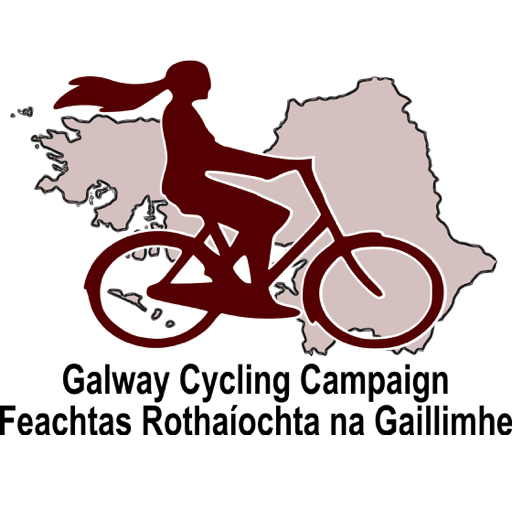The Galway Cycling Campaign has reacted with incredulity to Galway City Council’s latest redesign of the Seamus Quirke/Bishop O’Donnell Road, saying it will lead to increased danger for pedestrians and cyclists and serious inconvenience for public transport users.
As of 2007, the proposed design included an on-road solution for cyclists for the length of the corridor via a 4.5m-wide shared bus/cycle lane. The use of wide bus/cycle lanes is considered international best practice and is endorsed by the Government’s National Cycle Policy Framework. For instance, the Parisien “Mobilien” Bus Rapid Transit System has over 100km of shared bus/cycle lanes.
It has now been revealed that the Galway design has been dramatically changed without stakeholder consultation. The new design will incorporate a reduced bus lane of 3.125m width, and ramped cycle paths that will run alongside pedestrian walkways. Cyclists will be intermittently ramped up and down onto raised cycle paths (some as short as 60–70m) between junctions, and these cycle paths will swerve behind all bus stops along the route. The ramped cycle paths will not provide cyclists with access to the road on the approach to the Deane (Fort Lorenzo) and Browne (Corrib Park) roundabouts; as a result, cyclists will be forced to become pedestrians at either end of the corridor.
According to the Galway Cycling Campaign, the majority of cyclists will refuse to use the planned cycle paths due to the danger and significant inconvenience they will cause. It is the view of the Campaign that cyclists will stick to the safest and most expedient option and continue to use the shared bus lanes. With the formerly 4.5m-wide bus/cycle lanes being narrowed to 3.125m, public transport users will face significant inconvenience, as bus drivers will be unable to safely overtake cyclists (current city buses measures 3.1m in width). Through this dramatic redesign, the city council will impose an assumption that at times of traffic congestion, buses will have to travel at cycling speed. The Seamus Quirke/Bishop O Donnell corridor is a vital section of the City Council’s flagship Bus Rapid Transit scheme.
The Cycling Campaign believes that the use of €6 million by the City Council to effectively slow buses down to cycling speed, increase the risk of pedestrian/cyclist collision, and force cyclists to dismount at roundabouts, is a significant waste of limited funds.

Leave a Reply